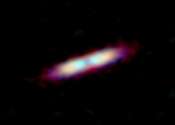Model suggests it could take decades for planet to start cooling after emissions are reduced
A trio of researchers at the CICERO Center for International Climate Research in Oslo, Norway, has found evidence that it could take decades for the planet to start cooling after human greenhouse gas emissions are reduced. ...









